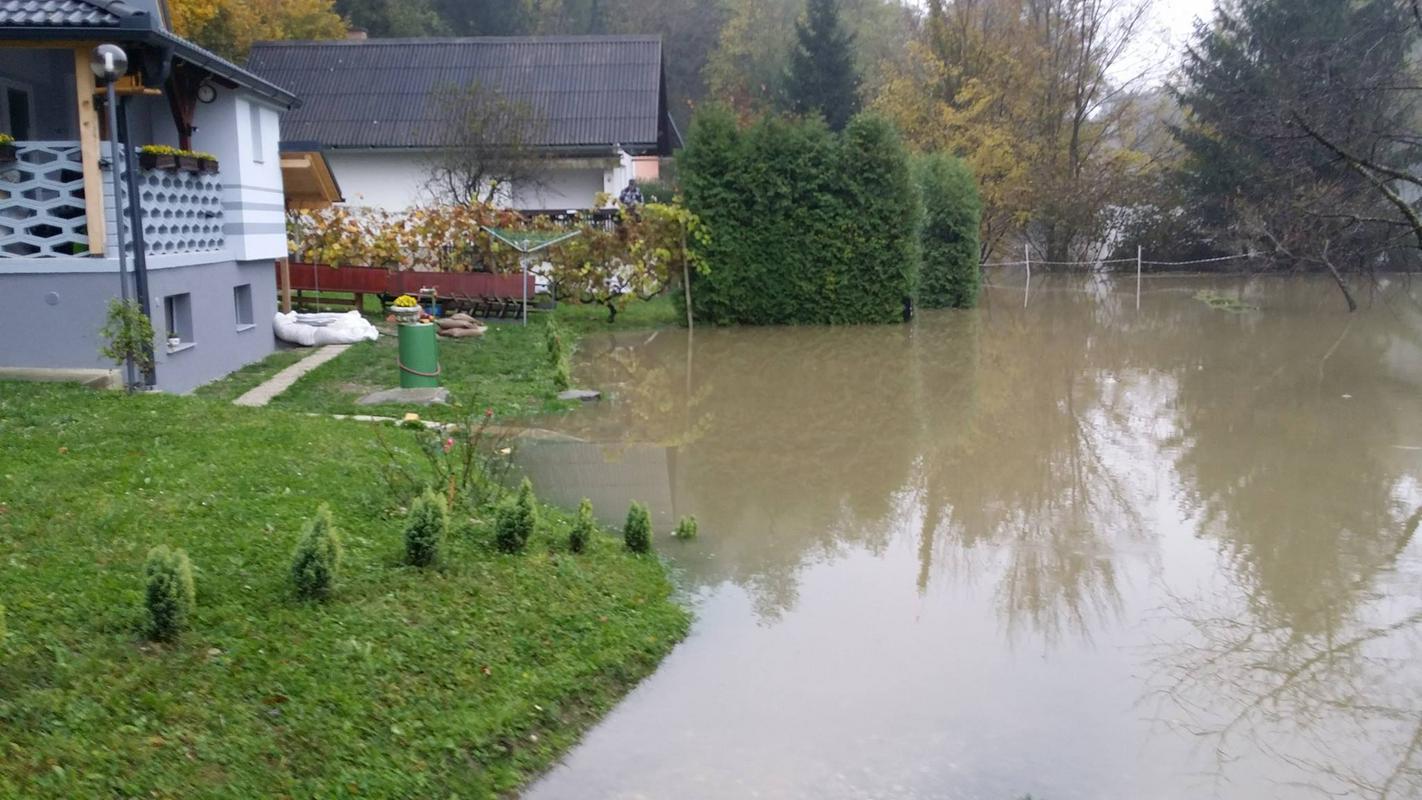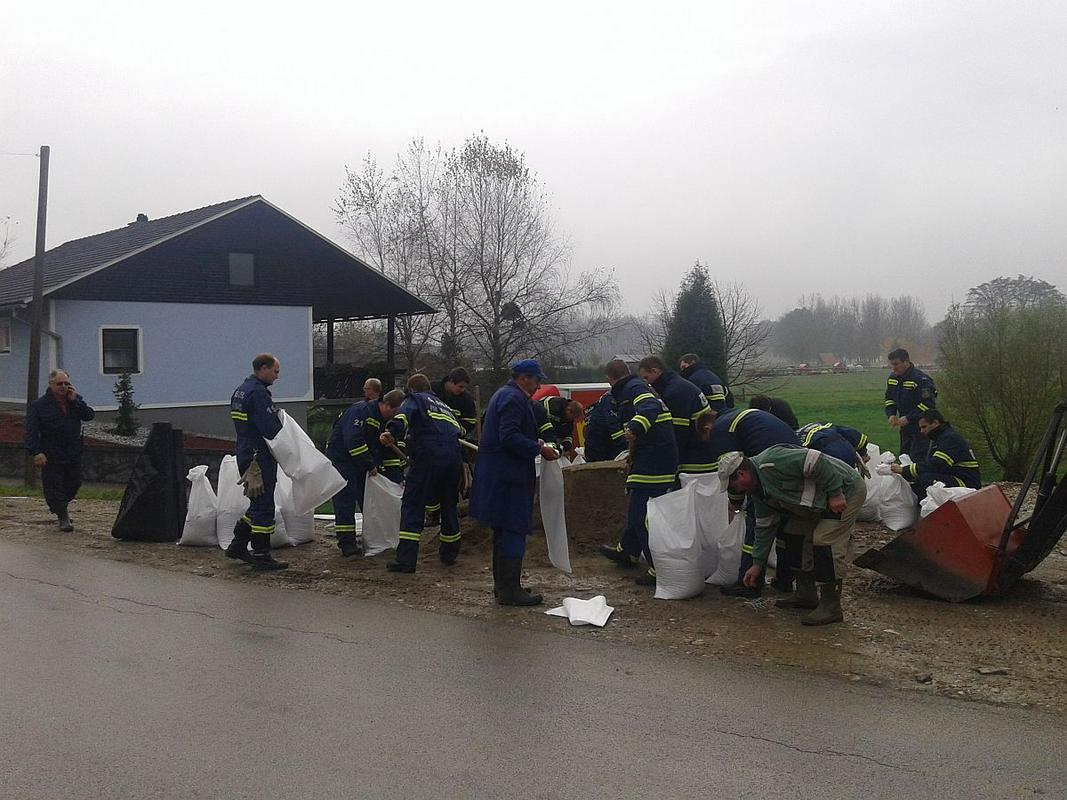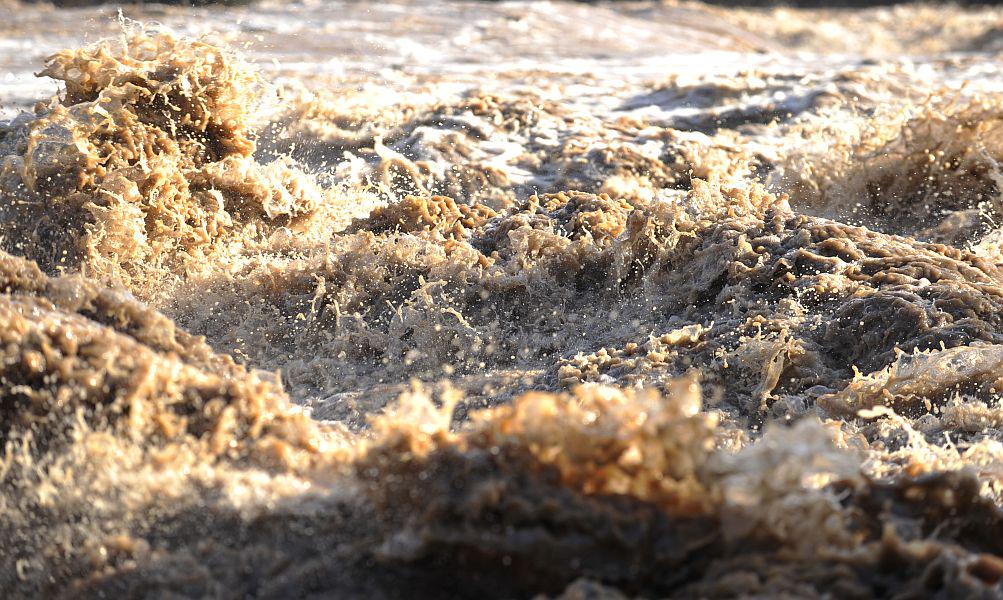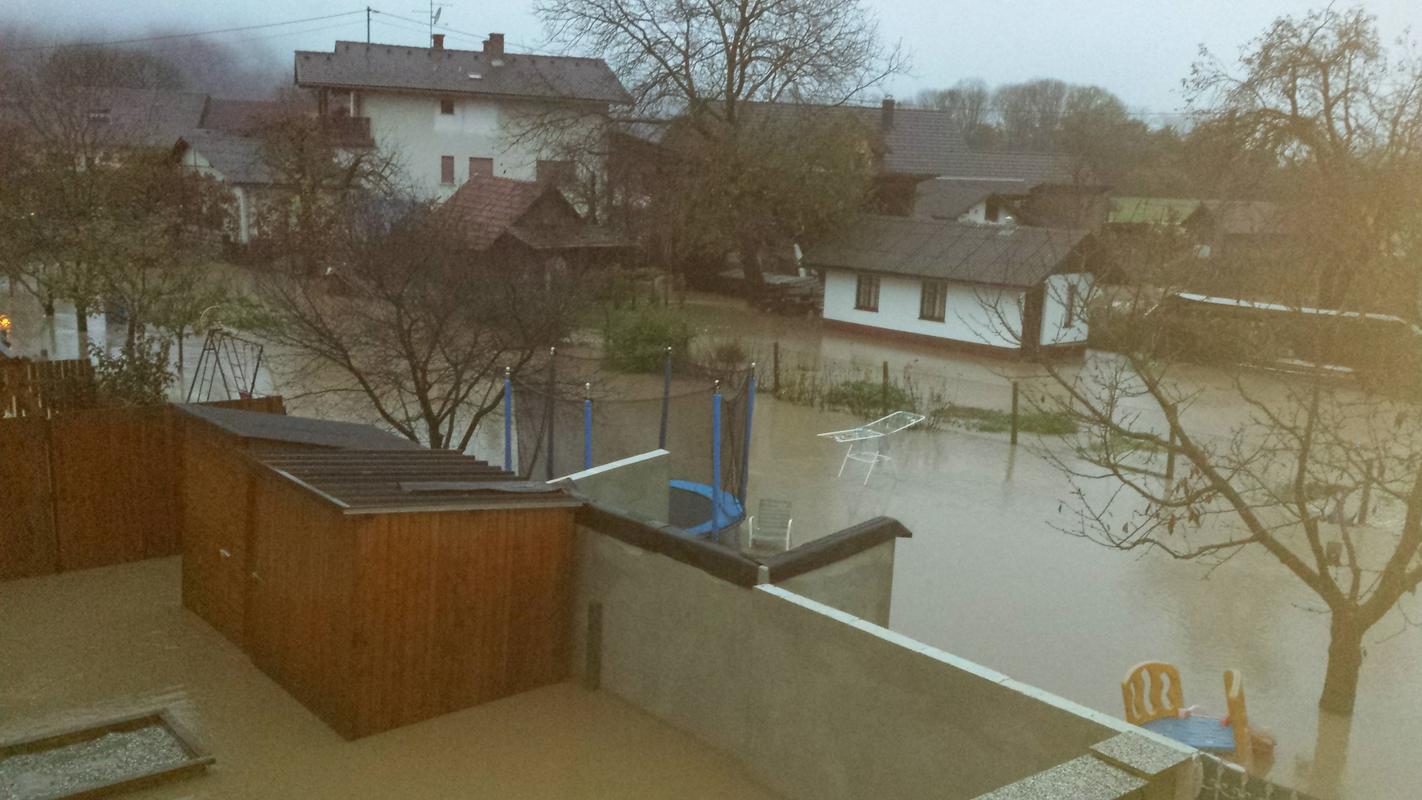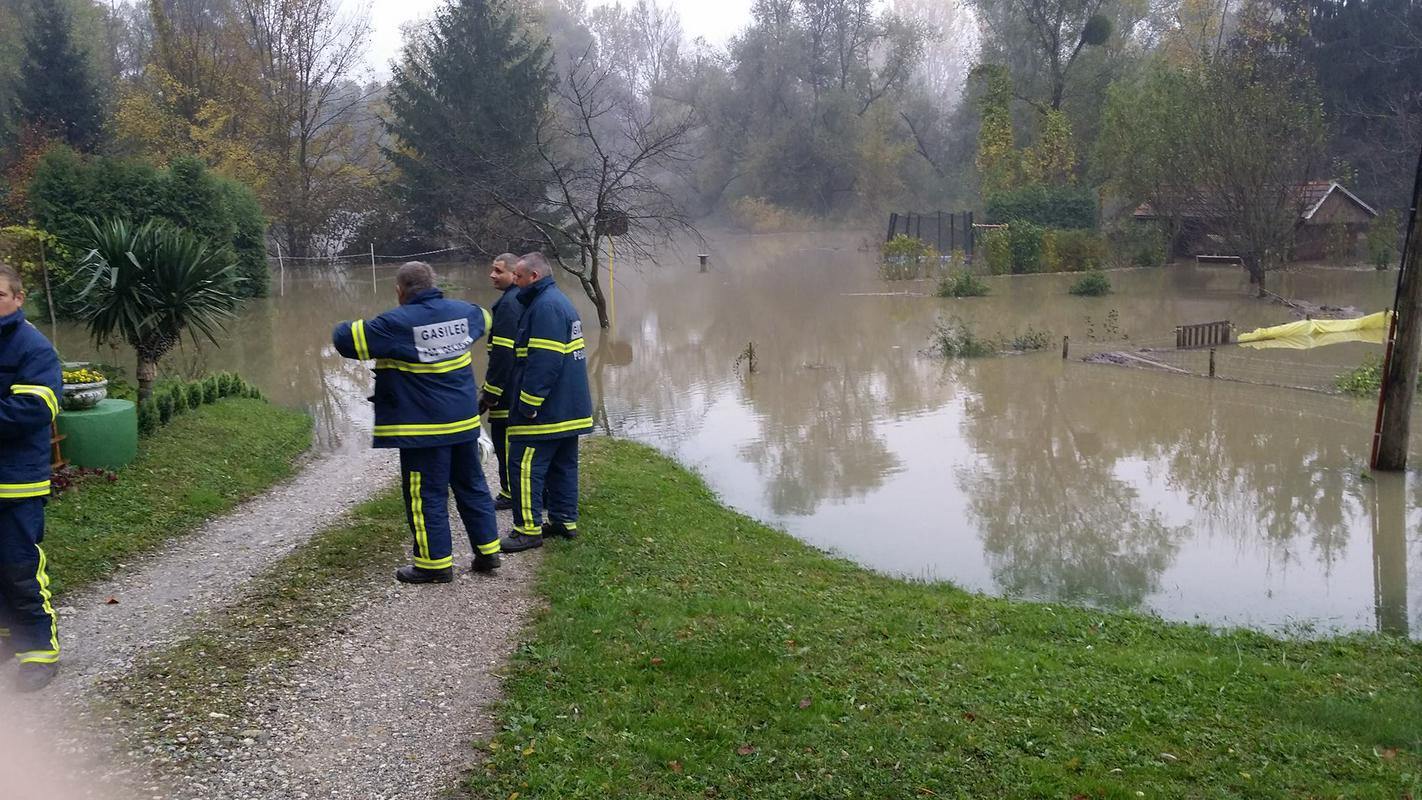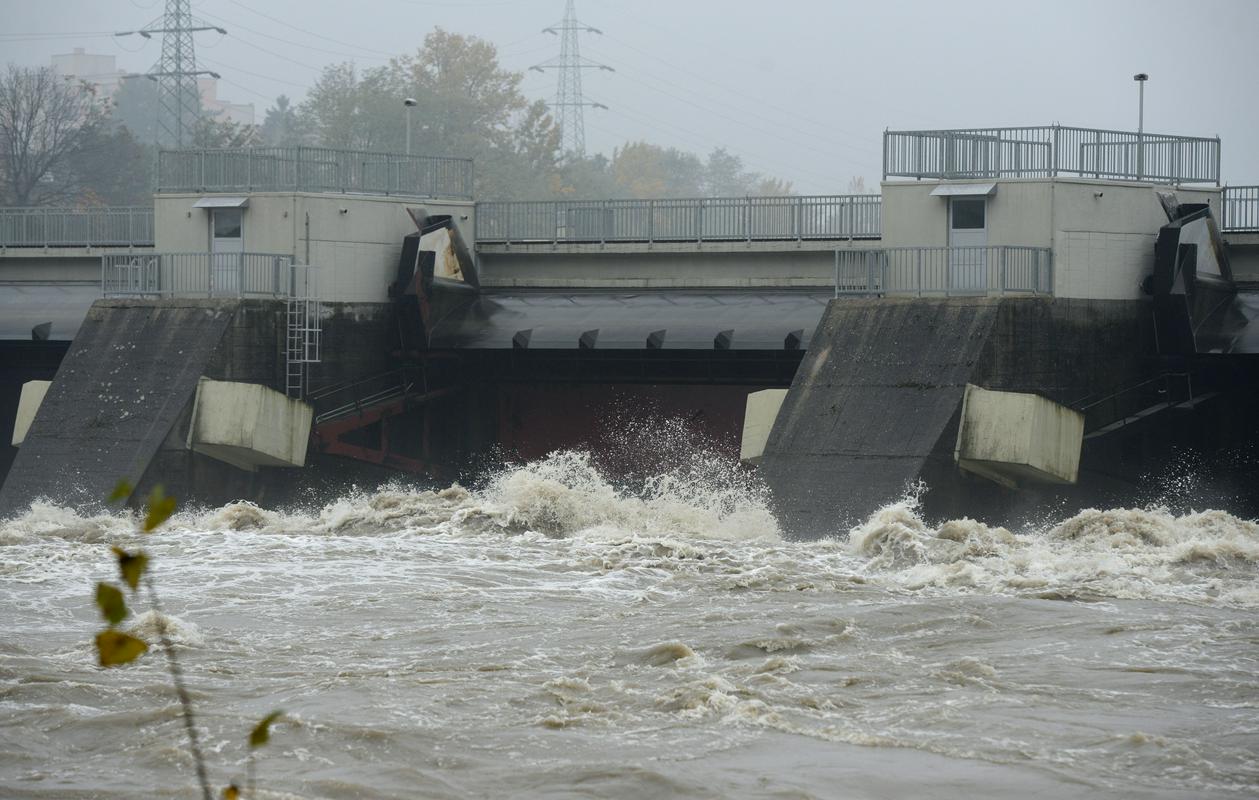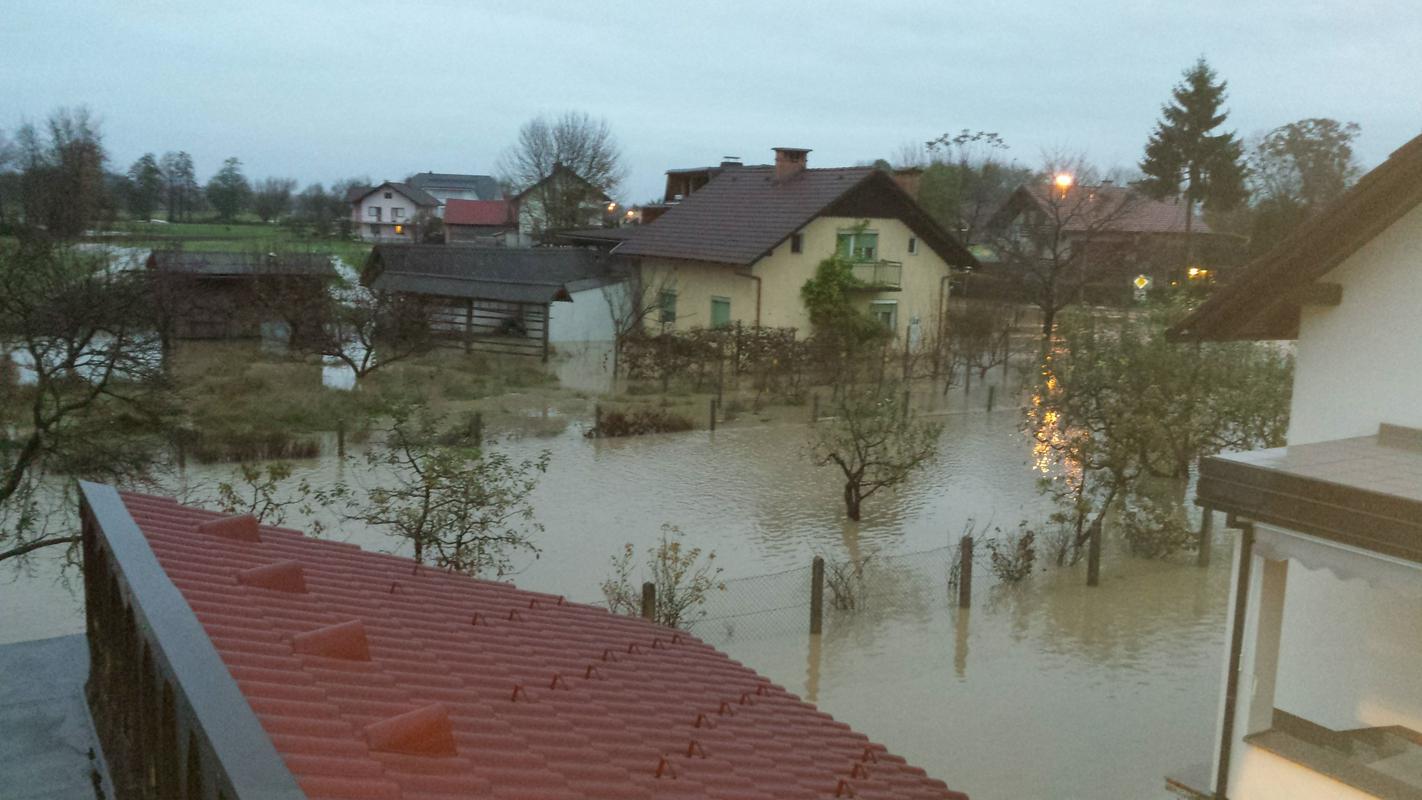

Reports of flooded basements are coming from many places in the western, southern, and central part of the country, mostly caused by rain water, but more and more watercourses are overflowing as well. Firefighters and members of the civil defence teams at the endangered areas are trying to prevent flooding of the residential buildings by building flood barriers. A number of roads have been flooded.
The mayor of Ig Janez Cimperman said for MMC that the situation in their municipality is catastrophic, as almost everything is flooded: "Everything is under water, the damage will be enormous." "We have engaged all our firefighters - - 190 people have been in the field since 1 am. We helped and also saved people, including babies and new mothers who were taken to hospital," he explained the situation, and added that this time the flood is worse than during the extensive flooding in 2010.
Besides Cerknica, Dolenja vas at the Cerknica lake is flooded as well. The water is threatening buildings in Grahovo, and some smaller villages.
The Goriško region lived through a cloudburst with violent downpour; it is the worst in the Kromberk hamlet near Nova Gorica. The water ran wild through several residential buildings.
In the lower Drava region filling and distributing of flood defence sand bags started already last night, in order to limit possible flooding of the Drava river. The risen waters of the Drava caused the Meža river to overflow along the river bed. The reports from Dravograd say the situation is alarming, but not as bad as in 2012. A number of other rivers have surpassed the alarm triggering height, including the Sava Bohinjka, the Bistrica in Sodražica, the Ljubljana, and the Vipava river in its lower course.
Further rain with possible heavy downpours could still cause fast rising of smaller rivers and watercourses in western, central and northern Slovenia, especially rivers from the Prealpine and Alpine regions, along the Dinaric barrier, and at the Notranjska and Dolenjska region. Today swelling of the Karst rivers is expected (the Krka, the Kolpa).




















































